
Obtaining a university degree does not only mark the beginning of young peoples’ careers, but is also the time that they often decide to start families and have children. Data from the Polish Graduate Tracking System (ELA) shows that female graduates who reside in small towns and villages choose to have children more often than those living in cities. Motherhood is most prevalent among graduates of the social sciences, and medical and health sciences.
Female graduates who live in small towns and villages choose to have children more often than those living in cities
ELA data reveals what percentage of female graduates become mothers in the years following the completion of their studies. As might be expected, this percentage increases as the years progress. The greatest share of mothers are graduates of second-cycle and long-cycle degree programmes. The percentages vary across fields of studies and places of residence. A higher percentage of female graduates who reside in small towns choose to have children than of those who reside in large cities and cities with powiat rights.
Female graduates of medical and health sciences comprise the largest share of women who become a mothers
Experts at the National Information Processing Institute (OPI PIB) have also identified differences between fields of study. Medical and health sciences boasts the highest percentage of female graduates who have children.
Percentage of women who have children: medical and health sciences
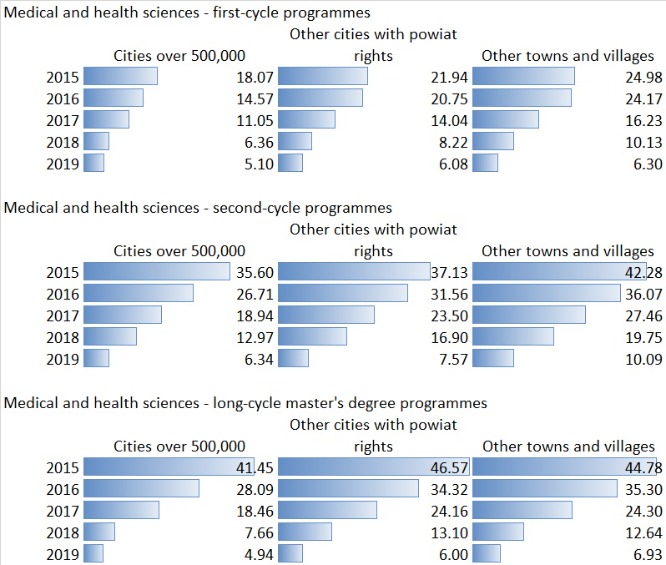
Over 40% of the female long-cycle graduates of medical and health sciences in 2015 became mothers within five years of completing their studies. Most children are born in the fifth year after graduation, which follows the period necessary for most to serve internships and acquire specialisations.
The share of women who have children is also relatively high among female graduates of the social sciences – particularly those who completed second-cycle programmes and reside in small towns. Such decisions are less common in the case of full-cycle graduates – most of whom major in law and psychology.
Percentage of women who have children: social sciences
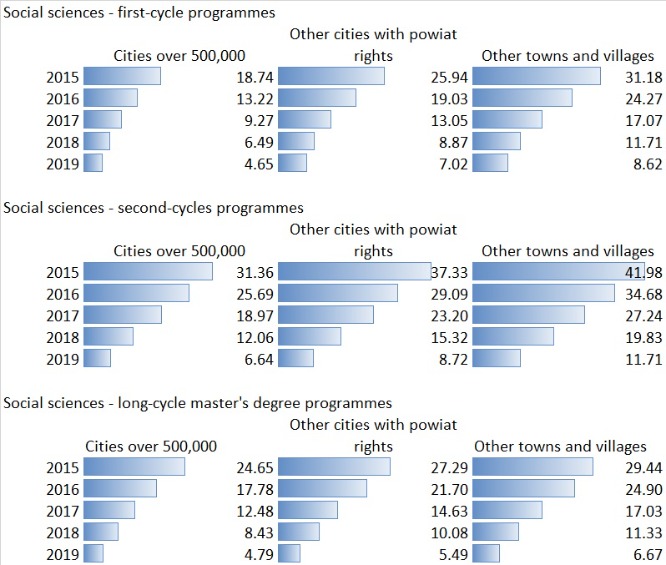
Another significant group of female graduates who have children are those who graduated in agricultural studies. As is the case of the groups discussed above, the highest percentage of women who have children reside in small towns and villages.
Percentage of women who have children: agricultural sciences
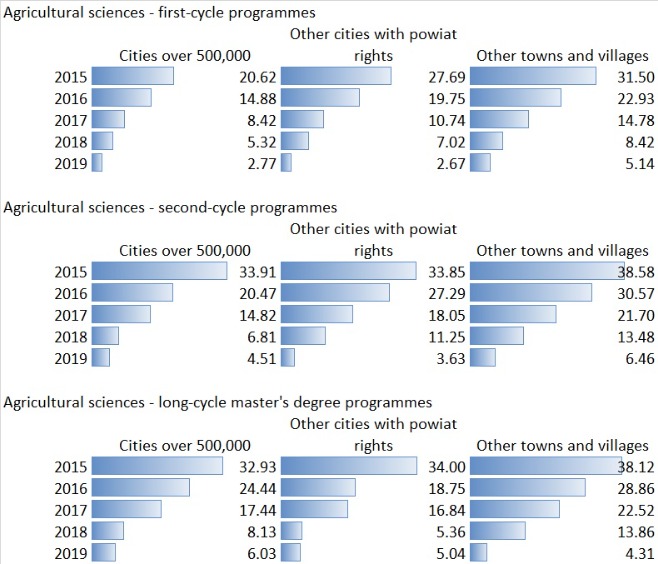
A large disparity can be observed between female graduates of engineering and technical service fields who reside in large cities, and those who reside in small towns and villages. The percentage in towns and villages who decide to have children following completion of second-cycle studies is similar to that of female graduates who specialised in agricultural sciences or humanities; this figure drops by eight percentage points for those residing in cities five years after graduation (among the female graduates of 2015). The gap widens with each subsequent year following graduation.
Percentage of women who have children: engineering and technical sciences
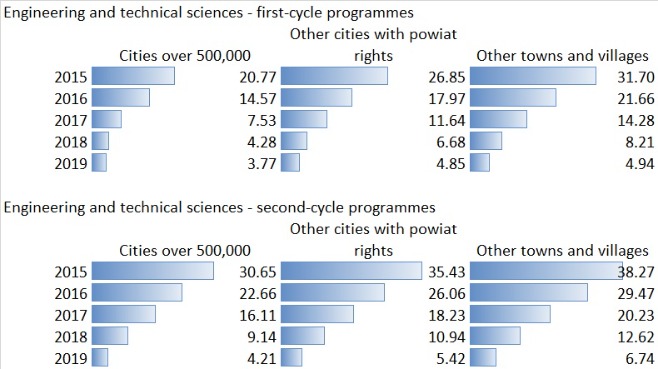
Percentage of women who have children: humanities
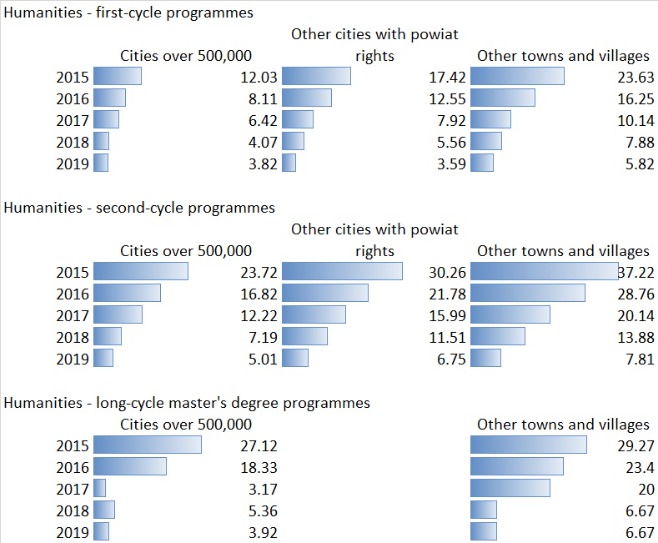
Having children is more common among female graduates of engineering and technical sciences than of the humanities
Another interesting result is that a slightly lower share of female graduates of the humanities decide to have children, when compared to those who graduate in engineering and technology – regardless of the size of the city/town in which they reside. Deciding to have children is also more common among female graduates with engineering and technical backgrounds than among those who obtained degrees in exact or natural sciences.
Percentage of women who have children: exact and natural sciences
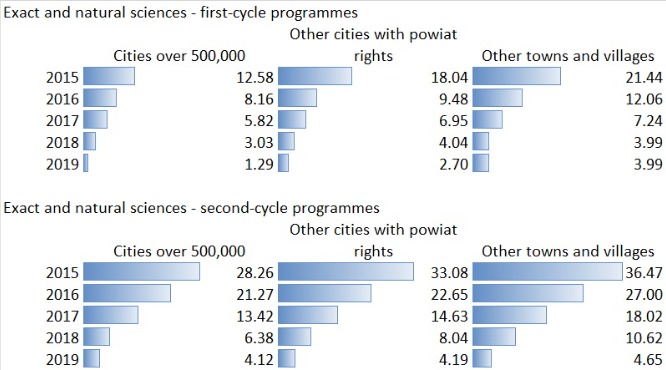
Deciding to have children is the least common among female graduates who specialised in the arts or in theology.
Percentage of women who have children: arts
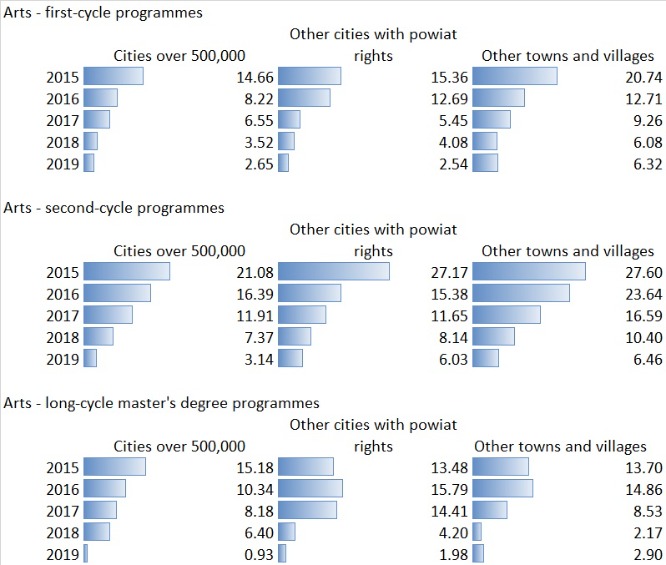
Percentage of women who have children: theology

Note: no percentage values are provided for female graduates who represent groups comprising less than 30 members.
